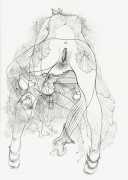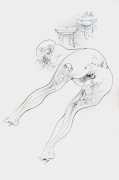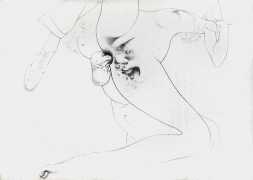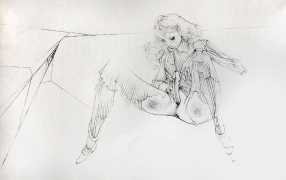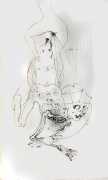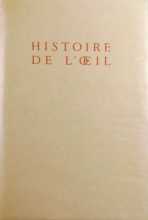 There is no evidence that Hans Bellmer and the influential French writer and critic Georges Bataille ever knew each other very well on a personal level, but their ideas about the undertones of violence and chaos inevitably associated with sexuality and mortality had been running along very similar lines for a long time before Bellmer started to create artwork specifically for Bataille’s erotic novella Histoire de l’oeil (Story of the Eye).
There is no evidence that Hans Bellmer and the influential French writer and critic Georges Bataille ever knew each other very well on a personal level, but their ideas about the undertones of violence and chaos inevitably associated with sexuality and mortality had been running along very similar lines for a long time before Bellmer started to create artwork specifically for Bataille’s erotic novella Histoire de l’oeil (Story of the Eye).
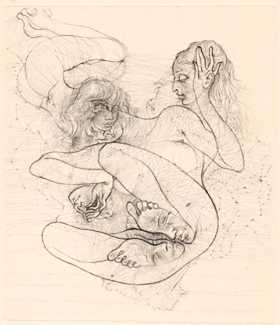
Though originally published in 1928, the first edition was of only 134 copies, and it was not until the early 1940s that clandestine copies began to appear more widely; it was censored until the 1950s and appeared in English translation only in 1953. Narrated by an unnamed young man looking back on his exploits, Histoire de l’oeil describes the sexual perversions of a pair of teenage lovers. Simone is his primary female partner, but the narrative includes two important secondary figures, Marcelle, a mentally ill sixteen-year-old girl who comes to a sad end, and Lord Edmund, a voyeuristic English émigré aristocrat. Though often portrayed as pure pornography, interpretation of the story has gradually matured to reveal considerable philosophical and emotional depth, its imagery built upon a series of metaphors which in turn refer to philosophical constructs developed in Bataille’s wider work on the erotic, including the eye, the vagina, the anus, the testicle, the egg, the sun and the earth – uncomfortable connections which Bellmer also explores to the limit in his artwork.
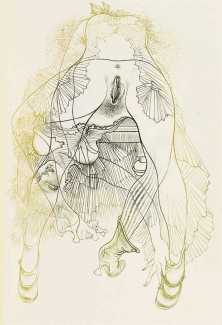
The 1940 edition of Histoire de l’oeil with six engravings by Hans Bellmer was published anonymously in an edition of 199 copies, but in addition he produced many studies for the illustrations, and also made separately-published versions of the prints, some of which were printed in the two-colour style he would later use in Petit traité de morale.
The background to the links between Hans Bellmer’s engravings and Georges Bataille’s novella is explored in detail in Peter Webb’s excellent 1985 book about Bellmer and his work, simply titled Hans Bellmer.


